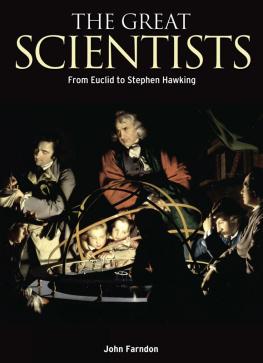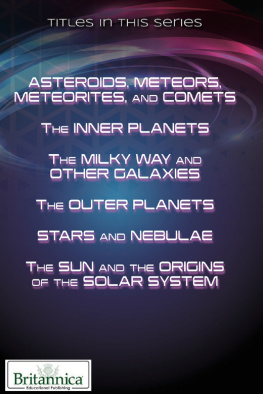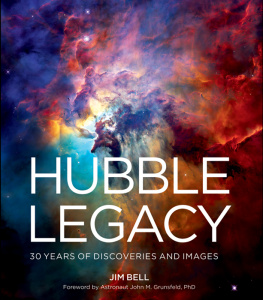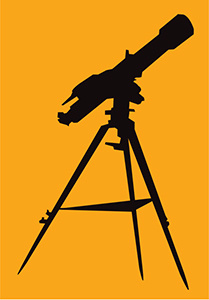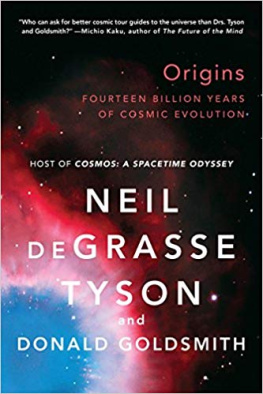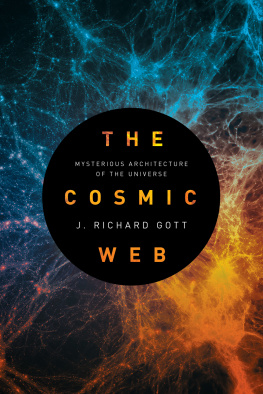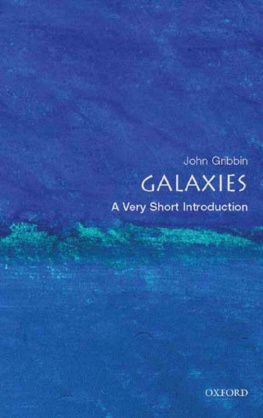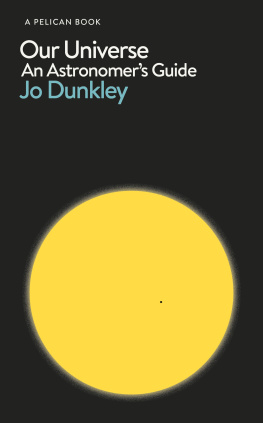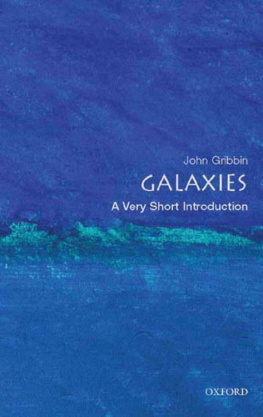John Farndon - What Do We Know About Stars and Galaxies?
Here you can read online John Farndon - What Do We Know About Stars and Galaxies? full text of the book (entire story) in english for free. Download pdf and epub, get meaning, cover and reviews about this ebook. year: 2011, publisher: Capstone, genre: Children. Description of the work, (preface) as well as reviews are available. Best literature library LitArk.com created for fans of good reading and offers a wide selection of genres:
Romance novel
Science fiction
Adventure
Detective
Science
History
Home and family
Prose
Art
Politics
Computer
Non-fiction
Religion
Business
Children
Humor
Choose a favorite category and find really read worthwhile books. Enjoy immersion in the world of imagination, feel the emotions of the characters or learn something new for yourself, make an fascinating discovery.
- Book:What Do We Know About Stars and Galaxies?
- Author:
- Publisher:Capstone
- Genre:
- Year:2011
- Rating:5 / 5
- Favourites:Add to favourites
- Your mark:
- 100
- 1
- 2
- 3
- 4
- 5
What Do We Know About Stars and Galaxies?: summary, description and annotation
We offer to read an annotation, description, summary or preface (depends on what the author of the book "What Do We Know About Stars and Galaxies?" wrote himself). If you haven't found the necessary information about the book — write in the comments, we will try to find it.
This book explains how the Universe is made up, from stars and their systems to galaxies and globular clusters.
What Do We Know About Stars and Galaxies? — read online for free the complete book (whole text) full work
Below is the text of the book, divided by pages. System saving the place of the last page read, allows you to conveniently read the book "What Do We Know About Stars and Galaxies?" online for free, without having to search again every time where you left off. Put a bookmark, and you can go to the page where you finished reading at any time.
Font size:
Interval:
Bookmark:

The ancient Greek astronomer Hipparchus invented the magnitude system for comparingstar brightness around 2,150 years ago. He made the brightest star he could see magnitude1 and the dimmest 6. Other stars were given scores in between. Today, modern, store-boughtbinoculars can show stars as faint as magnitude 9. The most powerful astronomicaltelescopes reveal faint stars of magnitude 30 or fainter. At the other end of thescale, astronomers have spotted very bright stars. But because they are brighterthan Hipparchuss brightest star, they actually have negative magnitudes, such asSirius at -1.46. The Sun is -26.7. A 14 magnitude star is 1 million times fainterthan a -1 magnitude star.
| The brightest stars | Apparent magnitude | Absolute magnitude | Distance from Earth (light-years) |
| Sirius | -1.46 | 1.45 | 8.6 |
| Canopus | -0.62 | -5.62 | 330 |
| Arcturus | -0.05 | -0.3 | 37 |
| Rigil Kent | -0.01 | 4.34 | 4.4 |
| Vega | 0.03 | 0.58 | 25 |
| Capella | 0.08 | -0.49 | 42 |
| Rigel | 0.18 | -6.81 | 820 |
| Procyon | 0.40 | 2.68 | 11 |
| Achernar | 0.45 | -2.74 | 140 |
| Betelgeuse | 0.45 | -5.03 | 410 |
| Hadar | 0.61 | -5.35 | 340 |
| Altair | 0.76 | 2.2 | 17 |
| Acrux | 0.77 | -4.23 | 330 |
| Aldebaran | 0.87 | -0.64 | 65 |
| Spica | 0.98 | -3.62 | 270 |
| Antares | 1.06 | -5.45 | 520 |
| Pollux | 1.16 | 1.09 | 34 |
| Fomalhaut | 1.17 | 1.74 | 25 |
| Mimosa | 1.25 | -3.98 | 360 |
| Deneb | 1.25 | -8.75 | 1,500 |
If the Universe is filled with shining stars in every direction, as astronomers believe,why is most of the night sky dark? This is called Olbers paradox. One reason isthat some stars are so far away light hasnt had time to reach us since the Universebegan. Another is that the expansion of the Universe causes a redshift so extremethat the stars cannot be seen.
Aguilar, David. Planets, Stars, and Galaxies: A Visual Encyclopedia of Our Universe. Washington, DC: National Geographic, 2007.
Dyson, Marianne J. The Space Explorers Guide to Stars and Galaxies. New York, NY:Scholastic, 2004.
Ridpath, Ian, ed. DK Illustrated Encyclopedia of the Universe. New York, NY: DorlingKindersley, 2011.
Taschek, Karen. Death Stars, Weird Galaxies, and a Quasar-Spangled Universe: TheDiscoveries of the Very Large Array Telescope . Albuquerque, NM: Univ. of New MexicoPress, 2006.
www.sciencenewsforkids.org/pages/search.asp?catid=31
A range of stories, including the latest research.
www.space.com/news/
A really good way of keeping up to date with the latest news in astronomy.
www.spacetelescope.org/
The Hubble Space Telescope has brought us some of the most stunning, revealing picturesof the Universe ever seen, and is still doing so. See also the Spitzer Space Telescope.
www.astronomynow.com/
This is the site of the Astronomy Now magazine, and has many fascinating articlesand stories about stars and galaxies.
http://blog.professorastronomy.com/
A fascinating blog written by U.S. astronomer Kurtis Williams.

If you look into the sky on a clear night, youll see the Moon and thousands of twinklingpinpoints of light spread across the darkness. All these twinkling lights are stars.Stars twinkle because dust and gas surrounding Earth get in the way of your view,and also because the atmosphere itself fluctuates. You may see one or two pinpointsof light that dont twinkle. These are planets, our neighbor worlds that circle theSun along with the Earth. Although much smaller than stars, planets are so much closerto Earth that they form pinpoints of light too big to be blocked out by dust. Thisis why you wont see planets twinkling.
How many stars are there?
You can see just a few thousand stars with your eyes alone. With an amateur astronomicaltelescope you can see a few million. But the Universe is beyond enormous. All ofthe matter and space in existence make up the Universe. Every star in the Universeis part of a giant star city called a . Astronomers have found that there areabout 100 billion stars in each galaxy. They have also found about 100 billion galaxiesin the Universe. That means there must be at least 100 billion times 100 billionstars in the Universe!
There is another difference between stars and planets. If you watch the sky for longenough, it looks as if all the stars are moving slowly from east to west. In fact,it is not the stars moving but the Earth. If the Earth stopped spinning, youd seestars stay perfectly still, in a fixed pattern. It takes 24 hours for the Earth toturn around. So the star pattern returns to the same place every 24 hours.
Unlike the fixed stars far away, however, the planets actually move through the skyas they circle the Sun close by. Thats how in ancient times knew planetswere different from stars, even though both were just pinpoints of light. Today,we can actually see that planets are globes like the Moon.
The stars are much too far away to ever visit, and even the most powerful telescopesonly show them as pinpoints of light. However, telescopes have revealed the secretsof the stars in other ways.
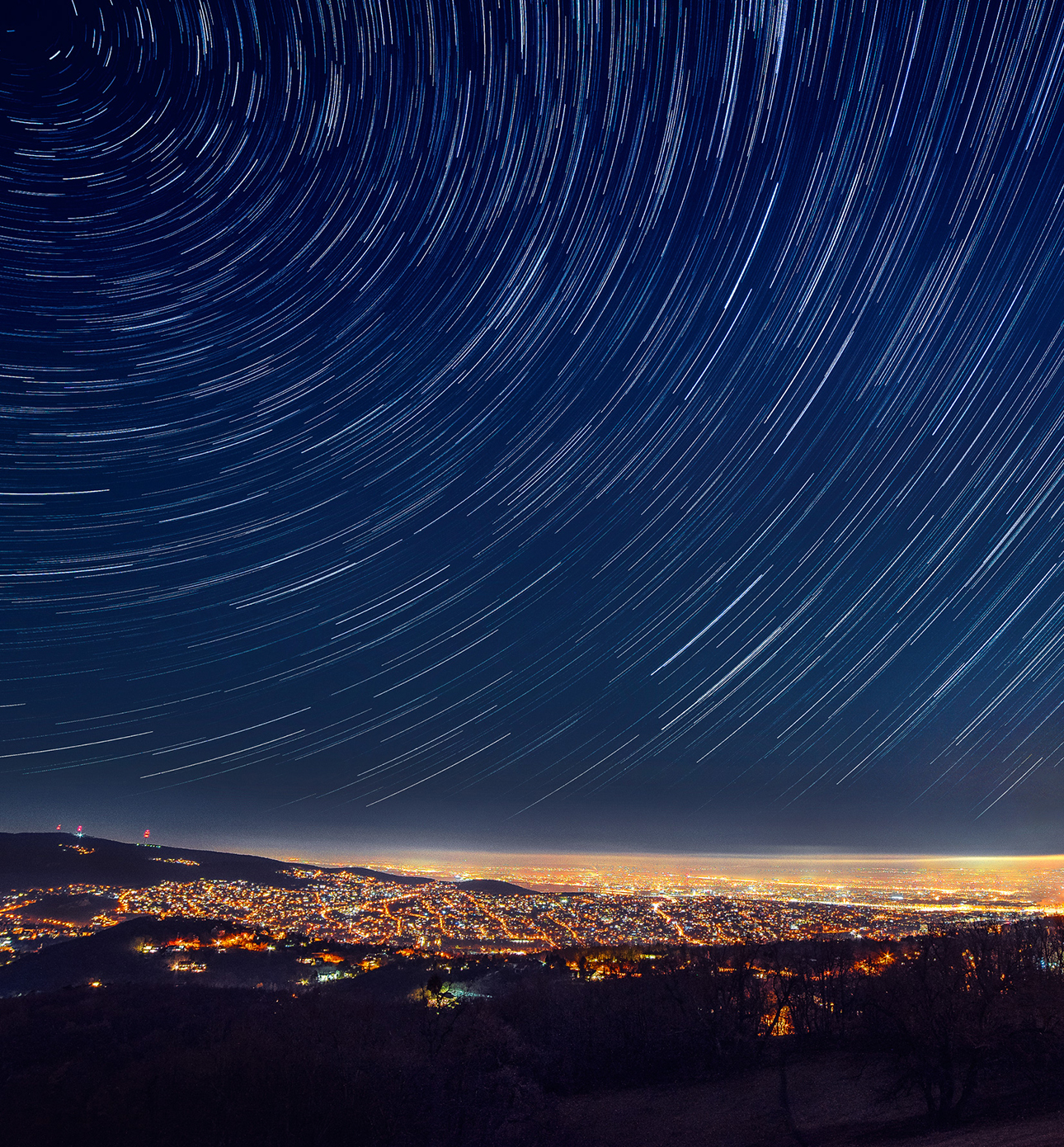
In a photo that uses a long exposure, such as this one, the movement of the starsthrough the sky as the Earth turns means that the stars appear as long curving streaks.
One of the biggest challenges astronomers face is measuring distances to stars faraway across space. They can calculate how far a nearby star is by the method.As the Earth circles the Sun, the star shifts sideways slightly compared to starsfurther away, as the angle we see it from changes. The nearer the star is to Earth,the more it shifts.
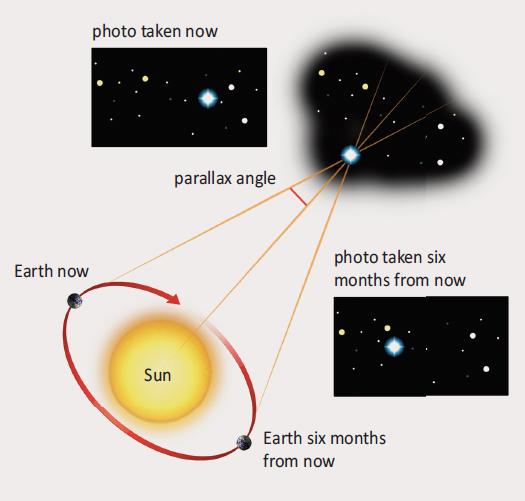
This diagram shows a basic example of the parallax method. By measuring the anglesof a stars light from two points in Earths orbit, an astronomer can calculate howfar away the star is. The further away the star is, the smaller the parallax angle.
With distant stars, this side-shift is too small to measure. The secret is to comparebrightness. A stars relative is how bright it looks compared to others.But a dim star might be shining feebly that is, it has a low absolute magnitude.Or it may just be far away. We can tell which by its color. The whiter a star is,the hotter and brighter it glows; the redder it is, the cooler and dimmer it is.A dim white star is a star far away. A bright red star is a star nearby. Astronomershave made a graph showing the relationship between color and brightness for mostordinary or Main Sequence stars. Calculating distances using this graph is knownas Main Sequence fitting.
Font size:
Interval:
Bookmark:
Similar books «What Do We Know About Stars and Galaxies?»
Look at similar books to What Do We Know About Stars and Galaxies?. We have selected literature similar in name and meaning in the hope of providing readers with more options to find new, interesting, not yet read works.
Discussion, reviews of the book What Do We Know About Stars and Galaxies? and just readers' own opinions. Leave your comments, write what you think about the work, its meaning or the main characters. Specify what exactly you liked and what you didn't like, and why you think so.


